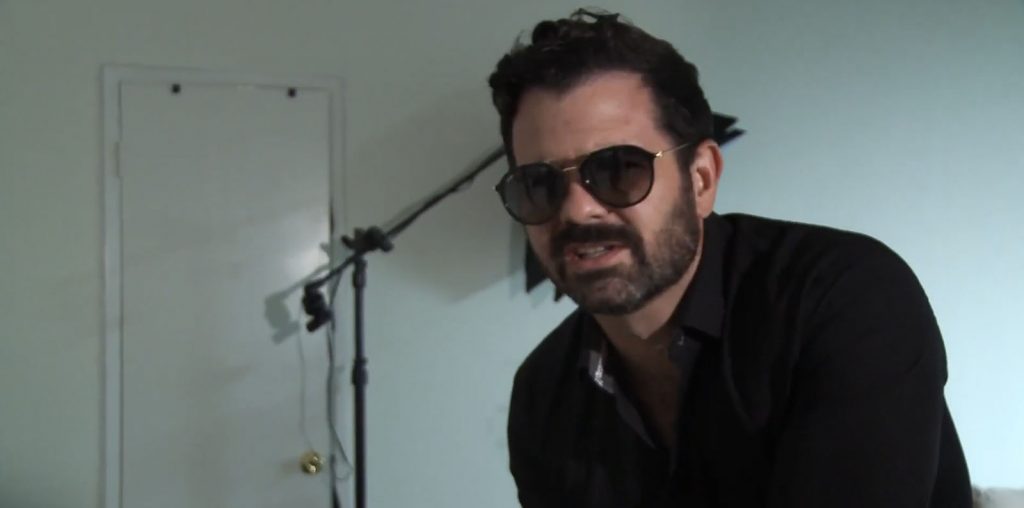
Twenty-five years ago, Maitland McDonagh created her first version of “Broken Mirrors/Broken Minds: The Dark Dreams of Dario Argento.” Since then, McDonagh has authored four books and has been one of the most recognized film critics in the US media – she was senior movies editor for TV Guide Online, editor of AMCtv’s Horror Hacker site and a contributor to Film Comment and Time Out New York.
However, McDonagh kept returning to Argento’s work over the past 25 years. Her latest edition of “Broken Mirrors/Broken Minds” is being published by the University of Minnesota Press.
Film Threat caught up with McDonagh at the New York office of her online media site MissFlickChick.com to discuss Argento and her fascination with his output.
What is the genesis of the original edition of this book? And why did you decide to revisit it after 15 years?
The very first version of “Broken Mirrors/Broken Minds” was my Columbia University master’s thesis, which I wrote in 1985. It was very academic, but at the same time I was writing I was collecting stills, posters, lobby cards, slides and ad mattes – that was fun.
When I rewrote my thesis into the first book version of “Broken Mirrors/Broken Minds,” which was published in 1990 by a then-new, UK-based house called sun tavern fields, all the stuff I’d acquired came in handy. The book covered Argento’s films from “The Bird With the Crystal Plumage” to “Two Evil Eyes,” and I had illustrations for everything.
Three years later, I got a contract to do “Filmmaking on the Fringe: The Good, the Bad and the Deviant Directors” – a series of interviews with horror filmmakers ranging from Wes Craven to Fred Olen Ray – for Citadel Books, and a US edition of “Broken Mirrors/Broken Minds” was bundled into the deal. That was the second edition, which was updated through Trauma.
About a year and a half ago, University of Minnesota Press contacted me about doing yet another edition of “Broken Mirrors/Broken Minds.” Argento had made seven features since the previous one, so it was an opportunity to update again. Argento’s body of work is now twice the size it was when I started out.
For those who are not familiar with Dario Argento’s works, what could be considered the essentials of his canon and what could be considered his under-appreciated gems?
The essentials are “Deep Red” (1975), “Suspiria” (1977), “Tenebrae” (1982) and “Opera” (1987). If you don’t like them, Argento isn’t your cup of tea.
For me, the underrated gem is “Stendhal Syndrome” (1996), which stars Argento’s daughter, Asia. It’s a polarizing film: People who hate it, including a lot of longtime fans, really, really hate it. But it walks the wire between unnerving beauty and seductive horror with incredible grace.
How has Argento’s work influenced contemporary filmmakers?
The roots of slasher movies lie in Agatha Christie’s 1939 “Ten Little Indians” by way of Mario Bava’s 1964 “Blood and Black Lace.” But Argento really refined and codified the high end of the body-count spectrum: Everything from “Halloween” to “Saw” – movies that launched two of the biggest horror franchises in history – owe Argento big time, from their use of music to the staging of their elaborately constructed murder sequences.
How is Argento viewed in his native Italy, versus how he is viewed in the USA?
I think the critical take on Argento is pretty much the same the world over: He’s been very high profile in genre circles from the start – although European cineastes noticed him before their Americans counterparts did – but in mainstream circles he’s still largely ignored and abhorred. At best, he’s lauded as camp: I heard a lot of that when “Mother of Tears” was released and don’t believe it for a second. Argento is very serious about what he does.
Anyway, the difference is that in the USA, Argento is a cult icon, while in Italy he’s a bona fide celebrity. Back at the beginning of his career he created a short-lived TV series called “La Porta sul Buio.” Each episode was a standalone suspense story and he introduced them onscreen a la Alfred Hitchcock. Because of “La Porta,” people who’ve never seen an Argento movie know who he is – like my Italian father-in-law’s age-appropriate lady friend, who was beyond impressed when she first saw the “Broken Mirrors/Broken Minds” poster Dario inscribed to me.
And now he’s also Asia Argento’s father; again, Asia has a certain cache here, but in Italy she’s huge – like some bizarre fusion of Paris Hilton and Natalie Portman. Above and beyond all that, she’s astonishingly talented: “Scarlet Diva” is a breathtaking debut and “The Heart is Deceitful Above All Things” is a chilling evocation of the place where tenderness intersects narcissism.
What are your next projects?
In addition to maintaining my own website (www.missflickchick.com) and promoting “Broken Mirrors/Broken Minds,” I’m working on two book proposals, neither of which has anything to do with horror.


Curiouser and curiouser. The Bird With the Crystal Plumage is probably my favorite Argento film. He certainly put an aesthetic spin to violence inflicted upon women, but Lucio Fulci’s exploration of pain and flesh wounds seems more applicable to 21st century slasher/gore films.
Hate to say it, but Argento’s modern output is not worthy of Ms. McDonagh’s fine scholarship. Like George Romero, Argento has completely lost it. His entire body of work used to be lauded for its asethetic. Nowadays he just plunks the camera on a tripod and hits ‘record.’
It’s very sad.